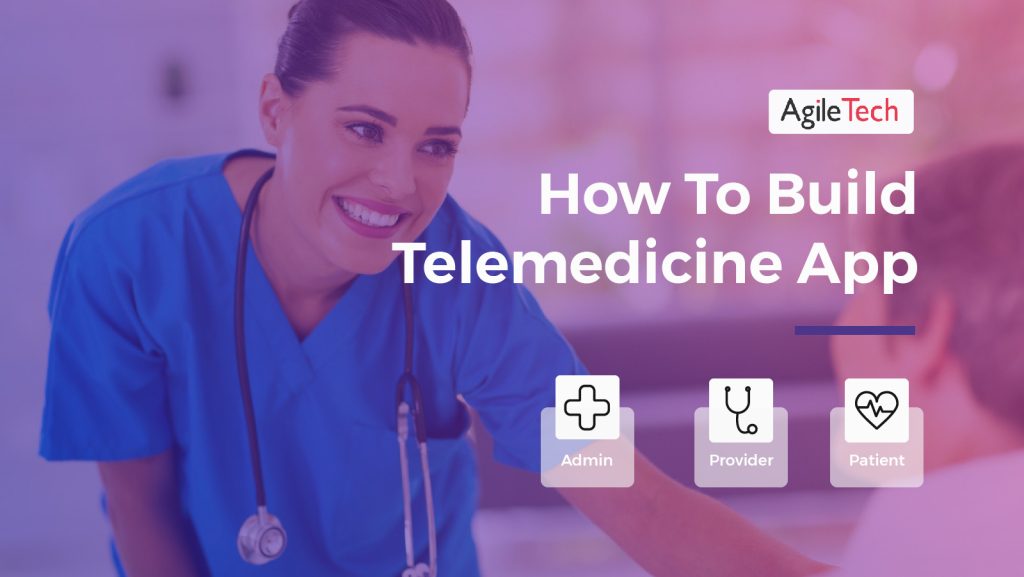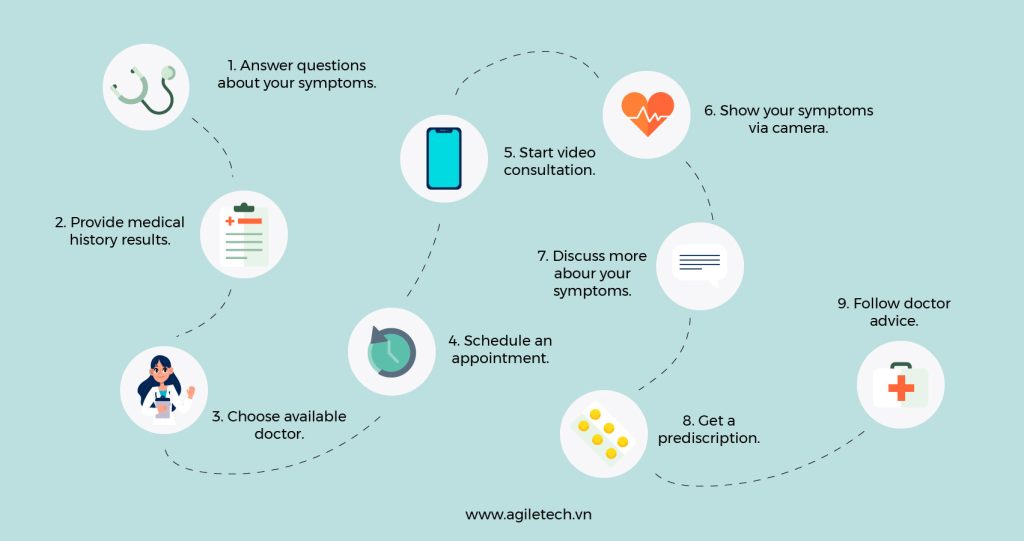Telemedicine App: How To Build Doctor On-Demand App For Healthcare?
Telemedicine is no longer just a convenience—it’s a cornerstone of modern healthcare delivery. Platforms like Doctor On Demand have proven instrumental in expanding access to care, especially for patients in remote or underserved areas, all while helping to reduce overall healthcare costs.
“Telehealth is an industry that’s full of promise. As a start, it can potentially bring medical care to people who would not otherwise have access to it.” – HealthIToutcomes
The COVID-19 pandemic was a turning point that accelerated the digital transformation of healthcare. Since then, telemedicine has evolved from an emergency response tool into a long-term strategic solution for hospitals, clinics, and healthcare startups.

According to Statista, the global telemedicine market continues to see exponential growth, projected to surpass $175 billion USD by 2026. With increased patient demand, rising healthcare digitization, and ongoing provider adoption, now is the ideal time to invest in building your own doctor on-demand app.
1. How Does a Telemedicine App Work?
At its core, a telemedicine app connects patients and healthcare providers remotely, helping individuals—especially those with symptoms or mobility issues—get medical advice from the safety and comfort of their own home. Let’s break down how these apps work in practice:

1.1. Online Video Consultations
Instead of waiting in crowded hospital lobbies, patients can schedule or instantly start a secure video call with licensed medical professionals. During these virtual visits, they describe symptoms, ask questions, receive diagnoses, and get treatment recommendations—all in real time.
Take the Doctor On Demand app, for instance. It offers 24/7 access to doctors, therapists, and psychiatrists across a range of devices including smartphones, tablets, and desktops. Patients don’t need insurance to use the service. A virtual visit typically involves reviewing the patient’s medical history, discussing symptoms, performing a basic visual exam, and prescribing appropriate treatment.
1.2. Treatment Guidance & Mental Health Support
Many telemedicine apps go beyond physical health, offering support for mental well-being, relationship issues, stress management, and more. Users can have private sessions with licensed therapists or message doctors directly for follow-up advice. This real-time communication helps users stick to treatment plans and better manage chronic or emotional conditions.
1.3. Digital Prescriptions & Medication Management
Need a prescription? With just a few taps, users can request medications through the app. After approval, they receive an e-prescription that can be shown at a local pharmacy—either digitally or as a printout. Some services also integrate with pharmacy delivery partners to send medications straight to the patient’s doorstep.
2. Why is a Telemedicine App Critical?
Your health is your most valuable asset—without it, you can’t achieve your fullest potential in life. In a world that has seen lockdowns and social distancing measures, the need for efficient, reliable in-home healthcare solutions has never been greater.
When traditional in-person visits aren’t an option, telemedicine apps are bridging the gap, supporting healthcare systems by improving the efficiency of medical services and allowing doctors to manage patients’ health remotely.
In essence, telemedicine apps work similarly to on-demand services like Uber, offering faster, more affordable healthcare at your convenience. Now, let’s explore the key advantages of telemedicine app development!
Read also: How To Build a Telemedicine App: An Ultimate Guide
2.1. For Patients
Convenience
In today’s mobile-first world, convenience is key—and healthcare is no exception. Telemedicine apps bring patients and healthcare providers closer than ever before, allowing patients to consult with doctors anytime, anywhere.
Time Efficiency
Say goodbye to waiting rooms. With telemedicine apps, patients can skip the long waits and receive consultations instantly after a video call. This rapid service reduces wait times, accelerating treatment and speeding up recovery.
Mobile Medical Records
Accessing your medical records has never been easier. With telemedicine solutions, patients can securely access their medical history and share it with other specialists for more accurate diagnoses and treatment plans.
2.2. For Healthcare Providers
Flexibility
According to Doctor On Demand, over 20% of doctors work 60-80 hour weeks, and 32% feel less engaged with their patients. Telemedicine apps offer doctors more control over their schedules and allow for better work-life balance while still delivering timely care to patients in need.
Increased Revenue
Telemedicine allows doctors to provide consultations outside regular working hours, tapping into new streams of income while reaching more patients, without the need for physical presence in the clinic.
Fewer Administrative Tasks
Telemedicine apps streamline administrative duties, reducing the need for paperwork and documentation. Doctors can spend more time seeing patients and less time on non-clinical tasks.
2.3. Essential Features of a Telemedicine App
As a technology partner with numerous clients, AgileTech Vietnam frequently receives requests on how to build a fully-integrated telemedicine app. Below are the essential features that make healthcare apps both convenient and cost-effective.
For Patients
- User Sign-In
The sign-in process should allow patients to create a profile with basic details like name, birthdate, medical tests, and history. It’s also helpful to offer login options via email, phone number, or third-party services like Google or Facebook. Ensure easy account verification with SMS. - Doctor Search & Filters
Patients should be able to search for doctors based on specialty, ratings, availability, gender, and location. Integrating Google Maps can help users find doctors nearby. - Video Appointments
Video consultations are essential for any telemedicine app. The quality of video and audio should be clear, regardless of users’ internet speeds. Using protocols like WebRTC and RTMP ensures smooth communication. - Built-In Chats
A secure chat feature enables patients to interact with doctors in real-time, ask follow-up questions, and share images or files. The more user-friendly and efficient the chat, the better the experience. - Payment Gateway
Integrating a secure payment gateway (Visa, PayPal, etc.) ensures that transactions are smooth and safe. It’s important to stay up to date with data protection regulations. - Ratings & Reviews
After a consultation, patients should have the option to rate their experience and provide feedback. This helps others find reliable doctors and gives practitioners valuable insights into how they can improve their services.
For Doctors
- Doctor Sign-In
Doctors should create a profile that includes their contact info, photo, availability, and credentials. Having access to patient history, prescriptions, and scheduled appointments in a centralized dashboard makes managing consultations easier. - Scheduling
Patients can book appointments based on doctors’ availability, while doctors can easily manage their schedule and accept or decline requests. Doctors should also have the option to set specific availability times. - In-App Messaging
In addition to video calls, doctors should have the ability to communicate with patients through voice calls and text-based messaging. Secure sharing of prescriptions, reports, and medical images is vital to ensure patient confidentiality.
3. How Much Does Telemedicine App Development Cost?

The cost of building a telemedicine app depends on several key factors—primarily the features you want to include, the complexity of the app, the development timeline, and the hourly rate of your chosen software development partner. Here’s a simple formula to estimate the cost:
Estimated Development Time × Hourly Rate = Total Development Cost
For example, hiring a development team from Western Europe or North America could cost anywhere from $40 to $60 per hour (or more), depending on the expertise. In contrast, outsourcing to a trusted Southeast Asian partner like Vietnam can reduce your costs significantly—ranging from $15 to $25 per hour, without sacrificing quality.
That’s why choosing the right development company is crucial. An experienced partner like AgileTech Vietnam can help you build a high-quality, cost-effective telemedicine app that meets your business goals—without breaking the bank.
4. How to Create a Doctor On-Demand App in 2025
Creating a doctor-on-demand app—especially in today’s fast-evolving digital healthcare space—requires both technical precision and industry-specific compliance. Whether you’re building for startups or established healthcare providers, the core development stages remain consistent:
Project analysis → UI/UX design → App development → QA testing → Release & post-launch support.
At AgileTech Vietnam, we always recommend beginning with an MVP (Minimum Viable Product). This lets you validate your idea, reduce risk, and quickly gather real user feedback—without waiting for the full product rollout.
Now let’s walk through the key steps to build a successful doctor-on-demand app:
Step 1: Secure Legal and Medical Certifications
Healthcare is a highly regulated industry. Before you build or launch your app, you need to comply with your country’s medical data and telehealth laws:
- In the U.S., your app must meet HIPAA, HHS, and FDA requirements.
- In Europe, ensure compliance with GDPR and EPSC regulations.
- Other countries may require local health authority approval or licensing.
Without these, your app risks being pulled from stores or banned altogether.
Step 2: Define Core Features
Think of your app’s primary value. What will set it apart?
Start with 2–3 high-impact features, such as:
- One-click video consultations
- Real-time appointment scheduling
- Chatbots for triage or follow-up
- Integration with wearables and health tracking tools
Your goal is to solve your users’ pain points—fast and seamlessly.
Step 3: Ensure Data Security & Compliance
In 2025, patients expect bulletproof data privacy and trustworthy communication. Here’s how to get it right:
- Encrypt all patient data (at rest and in transit)
- Limit EMR access to only doctors and the patient—not admins
- Follow best practices for healthcare cybersecurity
- Integrate secure payment gateways (e.g., Stripe, MoMo, Braintree)
A data breach not only damages trust—it could cost millions in fines.
Step 4: Design with Users in Mind
Your app will serve three user types: Patients, Doctors, and Admins. Each group needs a distinct, intuitive interface:
- Patients: Easy registration, doctor search, video call access
- Doctors: Appointment management, patient history, prescription tools
- Admins: System monitoring, analytics, support tools
Smooth UX = better adoption, engagement, and retention.
Step 5: Develop and Test Your App
Once the design is approved, your development team will:
- Build cross-platform apps (iOS, Android, Web) using tools like Flutter
- Implement real-time features (chat, video) using WebRTC or Twilio
- Conduct comprehensive QA testing to ensure stability and compliance
Want to reduce cost and time? Offshore teams in Vietnam can build high-quality apps at competitive rates without sacrificing quality.
Step 6: Launch and Scale
After successful testing, you’re ready to launch. Monitor key performance indicators like:
- Session duration
- Appointment success rate
- User satisfaction and retention
- Feedback from doctors and patients
Continue refining the product based on user input and healthcare trends.
Conclusion
Telemedicine is no longer just a trend—it’s a core pillar of modern healthcare. As patient expectations evolve, doctor on-demand apps are proving essential for delivering timely, cost-effective, and accessible care. With the right features, security protocols, and user experience, your app can make a meaningful impact on both patients’ lives and your business goals.
If you’re ready to bring your doctor-on-demand app idea to life, partnering with an experienced development team is key. At AgileTech Vietnam, we specialize in building HIPAA-compliant, scalable telemedicine platforms tailored to your needs.